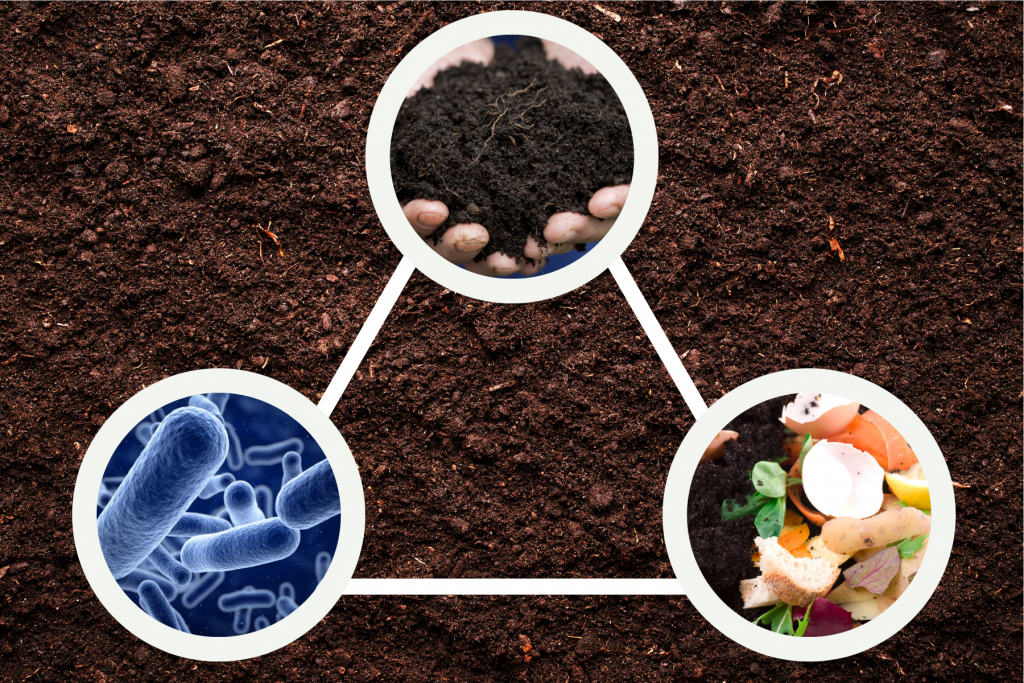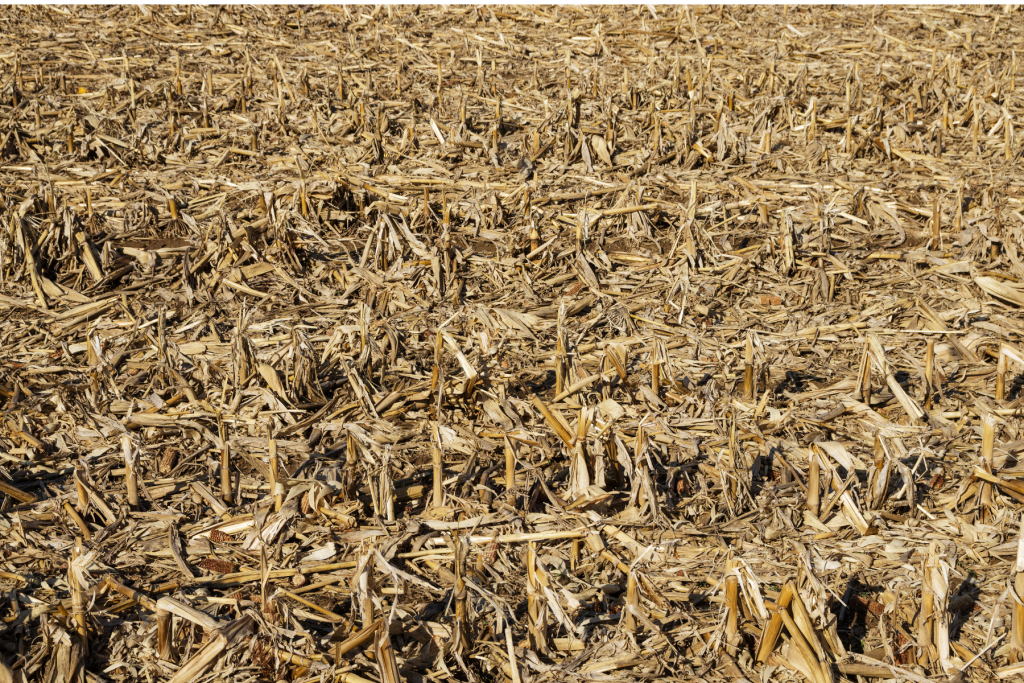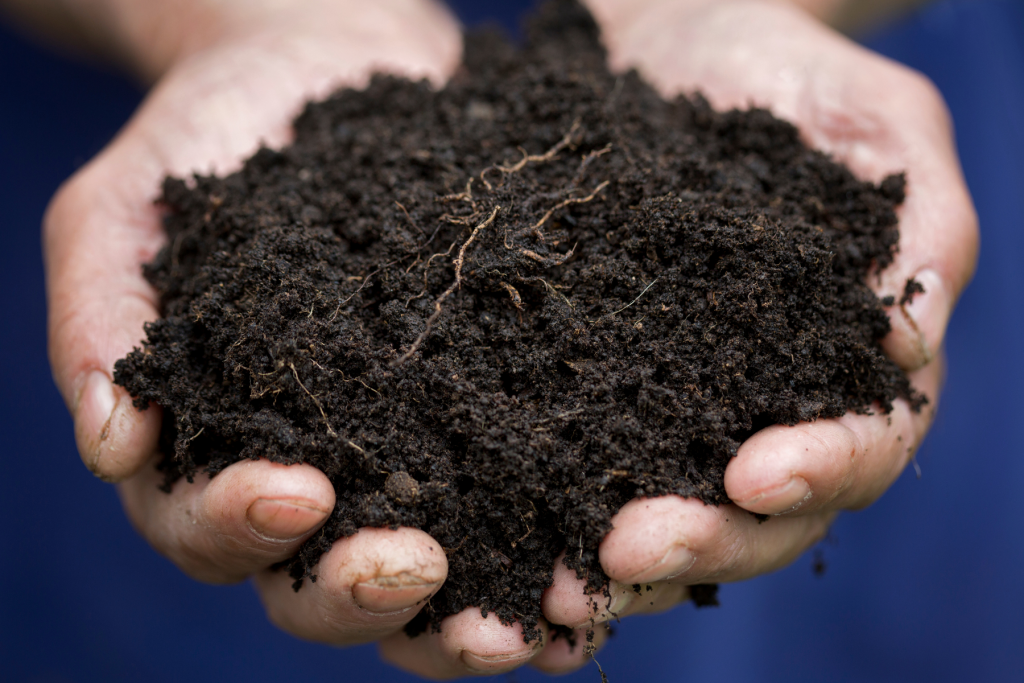
Organic matter makes up 1-6% of most soils. Organic matter (OM) is what makes your soil fertile. Soil biology can live and thrive in OM and so can your plants. Organic matter is derived from decomposed plant and animal materials, which supplies nutrients for organisms. It also forms different sized aggregates that aid in better gas and water exchanges in the soil. So, what makes up organic matter? OM is made up of three parts: the living, the dead, and the very dead.
The Living

The “living” part of organic matter is made up of the organisms that call soil their home. Bacteria, fungi, viruses, algae, moles, rabbits, woodchucks, plant roots, etc. are all considered living organic matter. Soil organisms make up 25% of the earth’s total biodiversity. In just a teaspoon of soil, there are tens of thousands of different organisms. Soil organisms have 3 main roles:
- Mix organic matter into mineral soil
- Stabilize soil aggregates and structure
- Make new chemicals and new cells in the soil
Microorganisms, earthworms, and insects feed on plant residues and manures for energy and nutrition. In the process, they mix OM into the mineral soil. Earthworms have a sticky substance on their skin that helps bind soil particles together. Other materials produced by fungi have a similar effect. These aggregates make up good soil structure. Roots and other organisms produce channels that stabilize soil structure and help with water infiltration. The sun puts energy into plants through photosynthesis. This energy ends up in the residue of plants after they die which microorganisms break down to create new chemical compounds.
The Dead

The “dead” part of organic matter is made up of the fresh residues including dead microorganisms and earthworms, old plant roots, crop residues, recently added manures, etc. Fresh residues have 3 main roles:
- Main source of food for soil organisms
- Provide nutrients for living plants
- Improve soil structure
Soil organisms eat the dead organic matter for energy, breaking it down which releases the nutrients necessary for plant growth. As the living organisms decompose the dead material, they release chemical compounds that bind soil particles together and benefit soil structure.
Some residues are broken down by soil organisms more easily than others. Proteins, amino acids, sugars, and starches are broken down very easily. While lignin, which is a fibrous compound, takes much longer for organisms to break down.
The Very Dead

The “very dead” part of organic matter is made up of substances in the soil that have already been decomposed by soil organisms and are inaccessible for further breakdown. We refer to this as humus. Humus has 4 main functions:
- Slowly release nutrients to plants
- Protect plants from harmful chemicals
- Reduce compaction
- Improve water retention
Humus has a good Cation Exchange Capacity (CEC) and has the ability to bind to nutrients that are essential for plants. It slowly releases these nutrients for plants to utilize while reducing the risk of leaching. Some humus molecules can encase potentially harmful chemical compounds in order to protect plants from taking them up. Humus can rebound and prevent compaction problems while also reducing soil density, improving aggregation to hold onto and release water when necessary.
What do we learn from soil organic matter?
Organic matter is extremely important for nutrient availability for crops, soil structure, and water retention. Disturbing soil has effects on the living, the dead, and the very dead parts of organic matter. Tillage destroys the habitat of living soil organisms and aggregates of soil structure. It can also make humus (organic matter that is inaccessible for further breakdown) more accessible to soil organisms for decomposition, releasing carbon into the atmosphere.
Converting your growing operation to a no-till system is easily manageable and can even save you time and money! To learn more about growing no-till click here.
Resources
Magdoff, F., & Van Es, H. (2021). Building Soils for Better Crops: Ecological Management for Healthy Soils (Fourth Edition). Sustainable Agriculture Research and Education (SARE).
